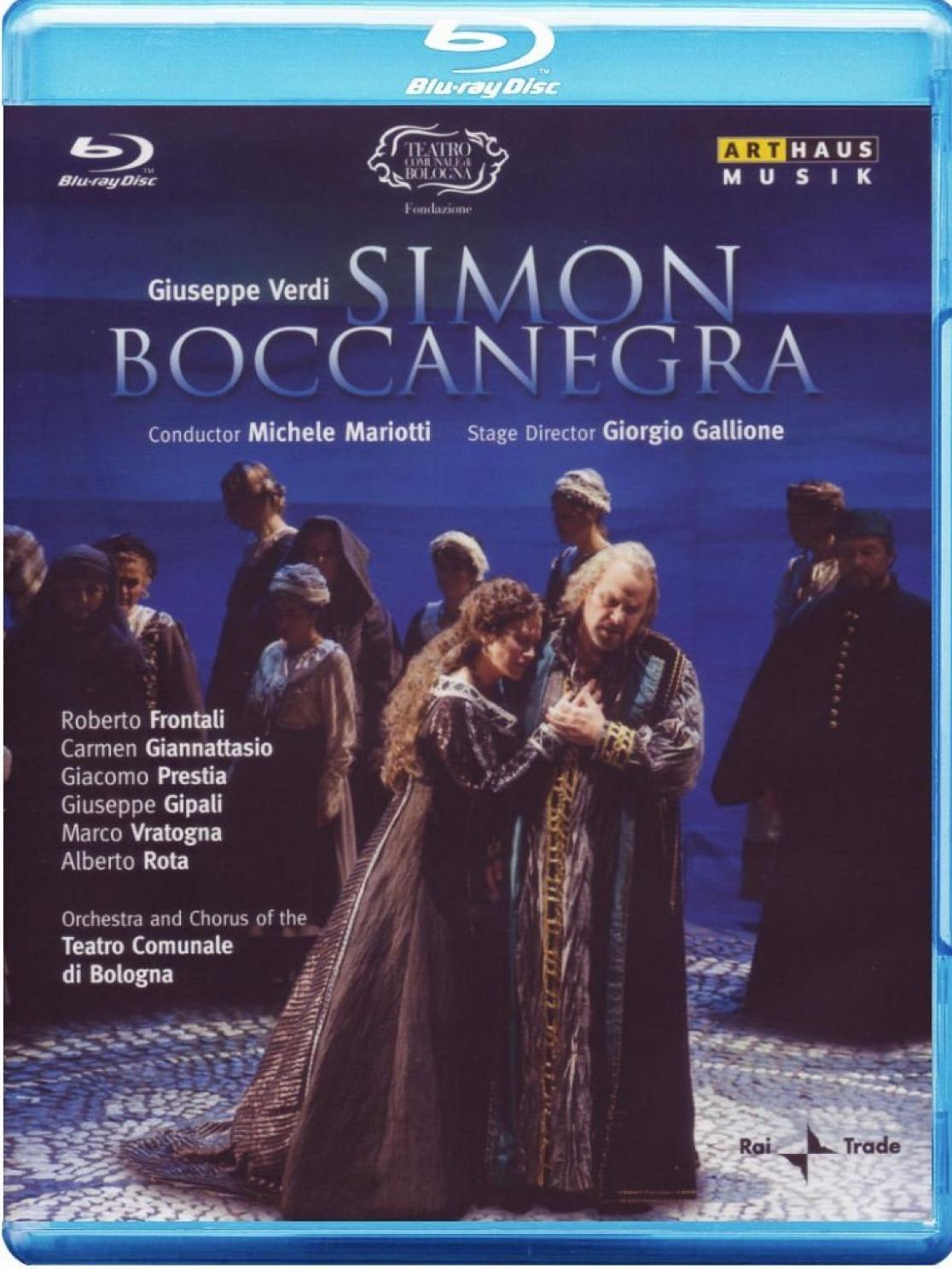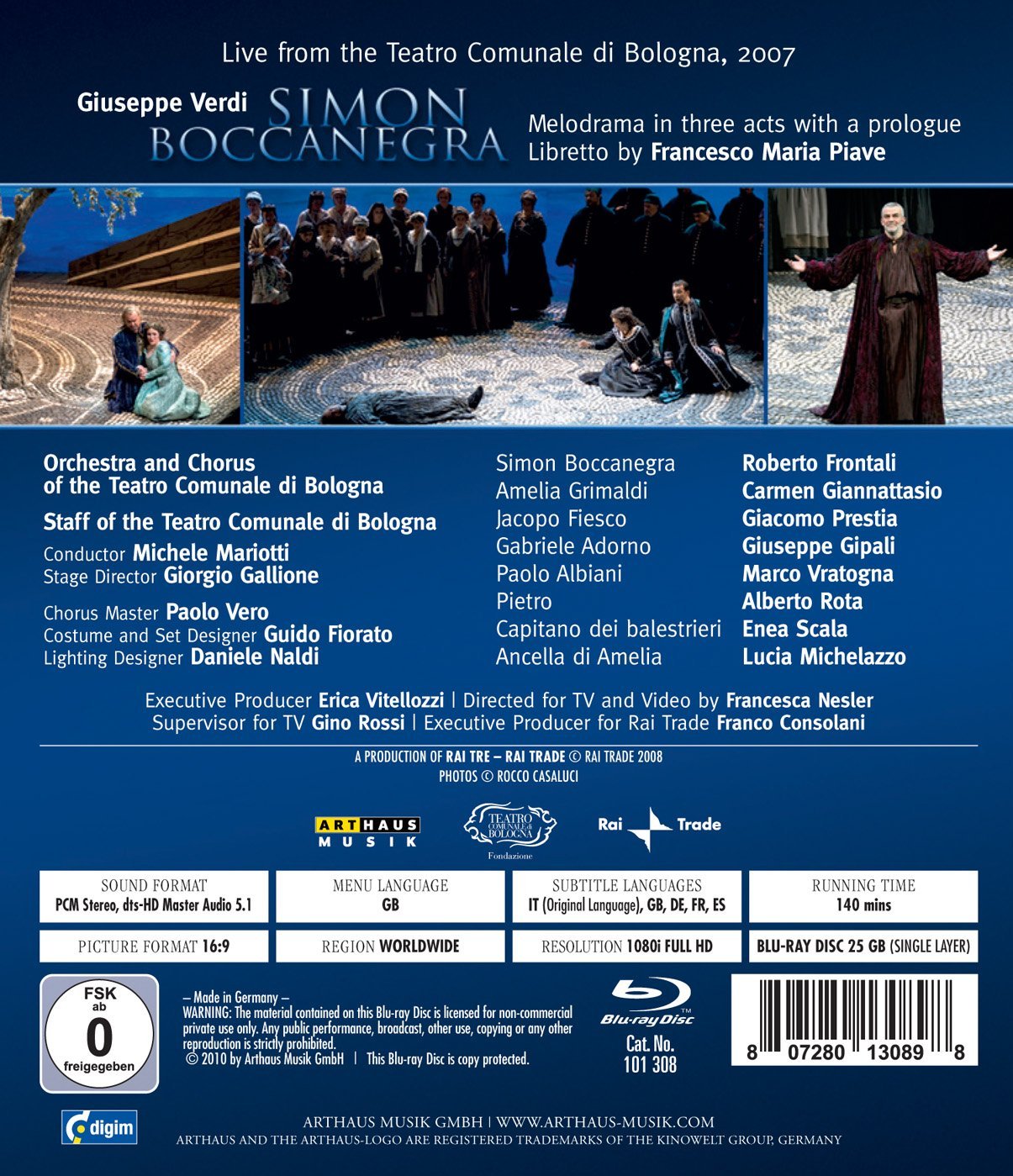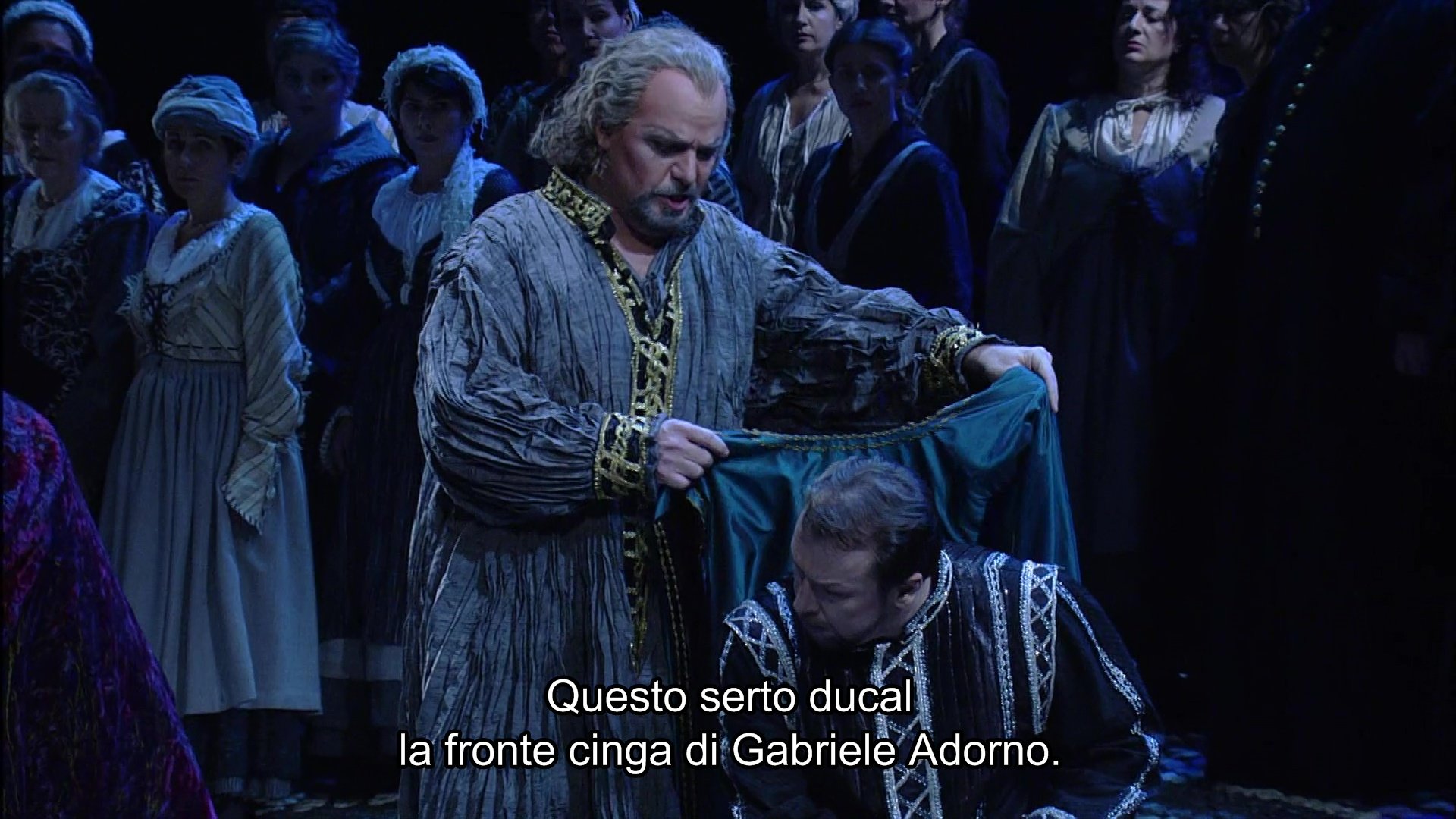

Verdi Simon Boccanegra opera to a libretto by Francesco Maria Piave and later revised by Arrigo Boito. Directed 2007 by Giorgio Gallione at the Teatro Comunale di Bologna with assistant director Gianni Marras. Stars Roberto Frontali (Simon Boccanegra), Carmen Giannattasio (Amelia Grimaldi), Giacomo Prestia (Jacopo Fiesco), Giuseppe Gipali (Gabriele Adorno), Marco Vratogna (Paolo Albiani), Alberto Rota (Pietro), Enea Scala (Capitano dei balestrieri), and Lucia Michelazzo (Ancella di Amelia). Michele Mariotti conducts the Orchestra and Chorus of the Teatro Comunale di Bolgona (Chorus Master Paolo Vero). Costumes and set design by Guido Fiorato with assistant set designer Monica Boromello and assistant costume designer Giorgio Cardosi; lighting by Daniele Naldi. Directed for TV by Francesca Nesler. Sung in Italian. Released 2010, disc has 5.1 dts-HD Master Audio sound. Grade: B-
Boccanegra is a tricky opera to follow. Arthaus helps by including a nice synopsis in the keepcase booklet. I’ll offer some screenshots to help you learn a bit about the main characters and how this was presented in the small opera house in Bologna.
In our first image we meet Boccanegra on the left with Paolo , one of Boccanegra’s followers. Both these men are plebeians. Below Boccanegra on the left agrees to become the Doge by sayings “So be it.” His supporter, the bald Paolo, will later turn against Boccanegra and become the villain in the opera. It’s nice to have a villain who is bald—this helps distinguish him from the other male leads:
Below is patrician Jacopo Fiesco. He is the nemesis of Boccanegra because Boccanegra seduced Fiesco’s daughter Maria. Here Fiesco complains “And you, Virgin, why did you let my daughter lose her virginal crown?”
Compared to the big opera houses, the set and costumes in Bologna are pretty primitive and look a bit shopworn:
The opera theater is relatively small, so they can hire younger singers who are getting started. Below is Amelia played by Carmen Giannattasio, who is younger and prettier than the Amelias you usually see in the big opera houses:
And here is Adorno, also younger and more handsome than most Adornos. He asked for the hand of Amelia in marriage. He just learned that she is not of noble birth, but was adopted as an orphan. His gallant answer is instantly, “I love the orphan girl.” The voice replies, “You are worthy of her.”
The Doge and Amelia and have just learned they are father and daughter. Emotions run high:
This is the council chamber scene—not impressive:
The Doge says “I want to make peace." He is thinking of the wars of the city states in Italy and also of peace between the social classes:
Paolo has turned against the Doge. He is tricked into invoking a curse on himself. The thinks, “Be cursed! The horror!”
Paolo puts poison in the Doge’s glass. The Doge observes , “Even water tastes bitter to the lips of he who reigns.”
Amelia and Adorno at the end of the opera:
Boccanegra is dying from the poison. He says, “I pass on the Doge’s crown to Gabriele Adorno.”
This, folks, is full-throttle Italian opera: it appears that every credited artist in this production is a cousin of Verdi. The wildly improbable plot could easily be turned into a Mexican TV soap. Watch the radiantly pure Amelia get chased about by various protectors, lovers, and lechers. Watch the youngest conductor you ever saw direct the rough-and-tumble Bologna band. With this recording you feel like you're in a small theater in a cittadina sitting right next to Joe Green himself. Of course, the production values are not the same as at, say, La Scala. But the raw emotions displayed help make up for technical weaknesses. Grade: B











